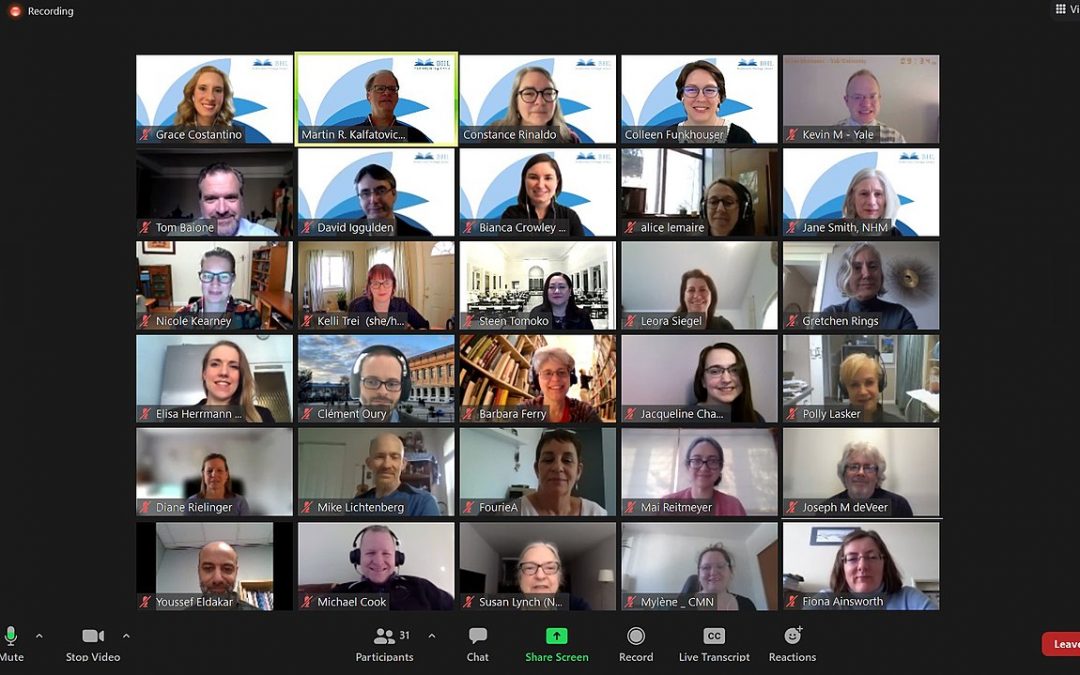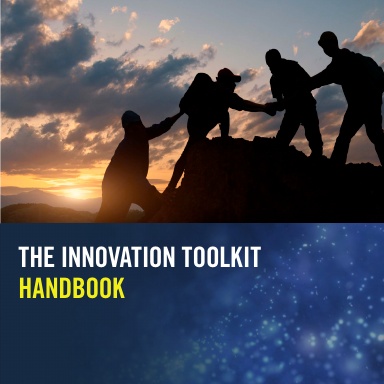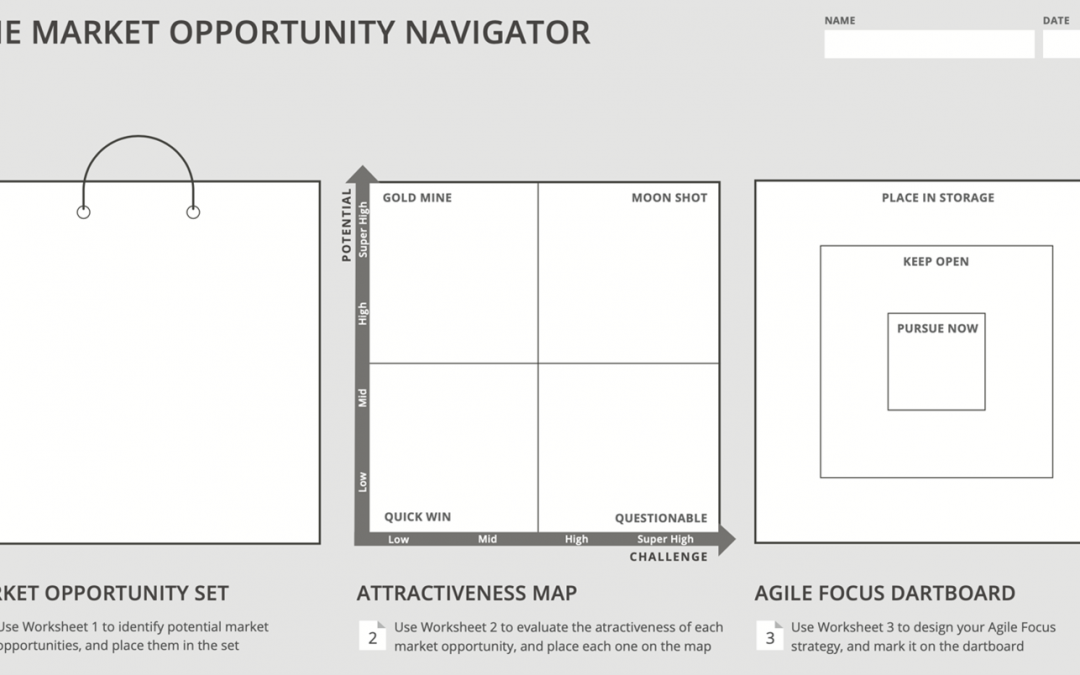
by dbward | Oct 2, 2023 | Facilitation Tips
Today’s blog post is by Starling Jaquan (with some help from Liz Roberts), two of ITK’s newest certified facilitators!
In today’s world where remote collaboration has become the norm, facilitating a large group presents its own unique set on challenges. In this context we are defining a large group as a group of 20+ people. In this post we will explore best practices for facilitating large online meetings, drawing upon past experiences and proven techniques to help you navigate this complex terrain.
The Challenge of Large Meetings
Before diving into best practices let’s explore why facilitating large meetings can be particularly challenging in the online realm.
- Simultaneous Voices. In a large meeting multiple participants may chime in at the same time which can lead to confusion among meeting attendees.
- Increased Opportunity for Disagreement. As the group size grows, so does the potential for differing opinions to come to light. These disagreements offer the opportunity to resolve conflict and come to shared understanding.
- Uneven Participation. In a remote meeting, not all participants may actively engage or vocalize their thoughts, leading to valuable input being missed and not contributed.
Before the Meeting
Consider using breakout rooms Breakout rooms offer the opportunity for more intimate discussion where team members may feel more comfortable sharing their thoughts and ideas. In this smaller setting, the dynamics change, and voices that might have stayed silent in a larger group may start to chime in.
Have a Co-Facilitator (or multiple!) Having a co-facilitator (or multiple) by your side is like having a trusted companion on an epic journey. Your co-facilitator(s) can help share the workload and responsibilities of navigating the vast landscape of a large group. Before you and your co-facilitator go into the meeting discuss what roles you might take – one person can monitor the virtual board while the other keeps an eye on the chat.
Understand Technology Limitations Some participants may not be familiar with the technology (Mural, for example), or may not be able to access certain online tools. Or maybe the information is too sensitive to be posted in certain channels. As the facilitator, you’ll need to be prepared to explain the landscape and ensure everyone is up to speed.
During the Meeting
Embrace the Silence In the midst of a virtual meeting, silence can be a powerful ally. Instead of fearing it, embrace it. Allow for moments of quiet reflection. These moments give participants the space to think, to digest, and ultimately to speak up.
Monitor the Chat If you are using a system that provides chat capability as well as audio & video, think of the chat as a parallel dimension where voices are typed rather than spoken. In large groups time is precious and not everyone may have the chance to unmute their microphone. This is where chat comes to the rescue. Having a facilitator dedicated to monitoring the chat ensures that no ideas go unnoticed.
Encourage Use of Cameras In the virtual realm cameras can be your window into participants thoughts and emotions. Encourage those who are comfortable to turn on their cameras. It’s like flipping the lights on in a dark room – suddenly you can see the expressions, reactions, and connections that were previously hidden.
Acknowledge Contributions In a sea of voices finding common ground can be like discovering treasure. Encourage team members to acknowledge ideas they resonate with. This helps team members feel that their input is being valued fostering a sense of camaraderie and collaboration.
After the Meeting
Asynchronous Input If you’re using a virtual whiteboard (like Mural), keep it open for additional input even after the meeting, allowing those who were not present during the meeting to contribute. This also allows for people to add in ideas that pop into their head after the workshop.
In conclusion, successfully facilitating a large online meeting is similar to embarking on an epic journey. With careful planning, effective use of technology, and a commitment to inclusivity, you can navigate the challenges and turn these gatherings into opportunities s for innovation and success.

by ITK Administrator | Jun 19, 2023 | Facilitation Tips
Photo by Glenn Carstens-Peters on Unsplash
Today’s blog post is by Allison Khaw
When the COVID-19 pandemic first hit, we all had to learn how to work remotely as we also navigated major losses and disruptions in our professional and personal lives. Now that the public health emergency is officially over, we still have to navigate a range of new workplace challenges. One of the big ones today: hybrid meetings.
Handling the transition from conference rooms to video calls wasn’t easy, and hybrid meetings take that difficulty to a whole new level. In fact, I know colleagues who go out of their way to avoid leading hybrid meetings, choosing instead to organize entirely virtual or in-person meetings. It’s not hard to see why!
A hybrid meeting (which could range from a working session to a presentation to an event) is the epitome of “high risk, low reward”—if it goes well, the organizer rarely receives formal recognition, but if it doesn’t go well, that’s the first thing that everyone notices. No wonder most people would probably say “good riddance” to holding hybrid meetings, if offered the choice never to do so again.
And yet, I would argue that we don’t really have that choice anymore.
Among other changes that COVID-19 introduced, the workforce of 2023 has a strong emphasis on flexibility and work-life balance. Many teams are geographically distributed across the globe, where only a subset of the team may be co-located. Even if everyone works from the same location, it’s likely that at least one person will need to join remotely for any given meeting. Sure, fully in-person or virtual meetings will continue to occur as well, but occasional hybrid situations are inevitable. The times are changing, after all, and we should adapt with them. (We may even ask ourselves the question, Should We Be Muting Our Sneezes?)
Like them or not, hybrid meetings are here to stay.
Despite the challenges, hybrid meetings might give us the best of both worlds. Attendees in the room can feel rejuvenated by in-person human interaction and the work culture that this promotes, while remote attendees are guaranteed a virtual seat at the table. In-person and remote attendees also get to connect with each other. In many ways, hybrid meetings lie at the intersection of modern technology and flexibility, lighting up a path for us to explore what’s possible.
I suggest it’s better to embrace hybrid meetings—and learn how to hold them successfully—than to keep them at arm’s length, perpetually afraid that they’ll “bite.”
We can achieve success by adopting small yet mighty habits that enable team inclusion and productivity in our hybrid meetings. This is an area where the “diffusion of responsibility” can be especially harmful, because the responsibility to demonstrate our awareness through our actions actually lies with each and every one of us. We need to consciously put ourselves in other attendees’ shoes, ensuring that our behaviors are conducive to everyone in the meeting.
So let’s take action! Here are some tips for holding successful hybrid meetings:
- For remote participants:
- Be intentional about making your presence known. Periodically remind others of your virtual presence by making your opinions heard. Consider turning on your video or asking those in the room to do so as well. Use common sense for when to speak up, but don’t hesitate to speak up. If you’re a seasoned teleworker, you can teach other remote participants about the best practices that you’ve learned firsthand.
- Avoid the temptation to get distracted or “fade” into the background, depending on the situation. Know your own goals for each hybrid meeting ahead of time—do you want to be a more active participant or a passive observer? Sometimes the latter is acceptable, but it’s up to you to choose wisely.
- For in-person participants:
- Remember the power of the room microphone. Anything from whispered side conversations to the crunch of chips can make it hard for remote attendees to hear. Know where the room microphones are located, or better yet, keep the conversation threads to one.
- Be rigorous about bringing all voices into the conversation. Occasionally ask, “Does anyone online have anything to add?” and then allow for longer pauses than you may be used to. This invitation gives remote attendees the chance to unmute and share anything that they couldn’t earlier. Also, ensure that at least one in-person attendee can see the meeting chat, so that no comments are overlooked.
- Consider stating your name before making your point. In a hybrid meeting where not everyone knows each other, get into the habit of starting with, “This is [insert name], and I think that…” Doing this for even the first ten minutes of a meeting can help remote attendees identify your voice, making a world of difference.
- Take physical actions that will be inclusive to the remote attendees. This may include using a virtual whiteboarding tool rather than writing on a physical whiteboard, or situating yourself in the camera’s line of sight rather than sitting in its blind spot. All of this translates to “I value your presence.”
- For the meeting organizer:
- Test out your meeting technology ahead of time to set yourself up for success. Consider doing a dry run of the technology a day early or officially starting your meeting five minutes after the hour in order to deal with any technical issues. That being said, sometimes unexpected issues do arise, so make sure you’ve planned for contingencies.
- Demonstrate strong facilitation skills. No matter what kind of hybrid meeting you are leading, recognize that it’s your role to guide the team in the right direction. At the same time, you don’t have to do everything alone: consider delegating roles to others, such as a meeting chat monitor or a designated moderator.
- Prioritize inclusive behaviors. If not everyone has met each other before, spend the time to do introductions for in-person and remote attendees. Consider leveraging Innovation Toolkit facilitator best practices, such as the question, “Who have we not heard from?” and the improv technique, “Yes, and…” to build on each other’s ideas. For better collaboration, encourage attendees to turn on their cameras during the meeting.
- Clearly communicate meeting guidelines and schedule changes. Prepare an agenda and objectives ahead of time, and set expectations at the start of the meeting. This includes being deliberate about stating the preferred way for remote attendees to participate, such as “speak up at any time” (assuming the meeting size allows for this) and “raise your virtual hand”. For any agenda adjustments or impromptu breaks, share start and end times both verbally and in the meeting chat.
- For everyone:
- Give each other grace. Respect that everyone is trying their best, especially since hybrid meetings comprise a space that’s not yet fully explored. If you notice that the meeting organizer isn’t implementing some of these actions that you think would be helpful, step up and act as a role model. Everyone needs a reminder sometimes, after all.
We’re at a pivotal moment in time to shape the future of hybrid meetings. If we don’t embrace them for all that they’re worth, we may lose an opportunity that we have in our professional lives to shine, whether from the conference room or from our computer screens—ideally, from both. Take this as your call to action to start leading the way!

by dbward | Jun 16, 2022 | Facilitation Tips, Misc Awesomeness
Team Toolkit is excited to announce that WE WROTE ANOTHER BOOK!!
It’s titled The Innovation Toolkit Handbook. In this book, several members of Team Toolkit share our specific practices and processes as clearly and directly as we can, along with some reflections on why we do what we do the way we do it. It’s not exactly a sequel to our first book. Instead, we think the characters from our first book would have wanted to read this one. Basically, this handbook takes you behind the scenes and fills in some gaps the website and first book don’t cover. You’ll find chapters about Team Toolkit’s culture, our certification process for new facilitators, and our method for developing new tools. We also share tips on how to use the tools, perspectives on failure, and commentary on a collection of adjacent topics that don’t quite have a home on our website.
You can get the PDF version for free right here. It’s also available as a paperback for $8.35 (plus shipping).

by dbward | Jun 6, 2022 | Facilitation Tips, Misc Awesomeness
This week’s post is by Manya Kapikian and Bill Donaldson
Eyes sparkling, front paws down, stick in mouth, a tail that’s wagging like a helicopter propeller at warp speed. That’s what my dog does when he indicates he’s ready to play. At 7, he’s a mature adult dog with a sense of curiosity, wit, and zest for life.
Associated as a part of childhood, human adults seemed to forget what their animal counterparts have not. Play is an activity that is never to be outgrown. Stuart Brown, author of Play, talks about how play helps children develop as individuals and members of a society. For children, play offers the opportunity to learn and grow, while having a bit of fun along the way. Many adults, on the other hand, are missing out on that benefit.
Brendan Boyle, Founder, IDEO Play Lab wrote: “Work doesn’t have to be serious to be impactful. In fact, we tend to get our best ideas when we break out of the usual routine and have a little fun.”
And so, play became a topic of conversation during a recent Lunch and Learn. The ITK facilitator asked the group: how do you increase play and playfulness during a meeting to increase innovation?
There were many activities that came up during the discussion. Some could be done virtually while others required everyone be in the same room. Here are a few of our activities that were successfully used as captured from the meeting that we’d like to pass along to you:
Rock, Paper, Scissors. If you are looking for an in-person activity, nothing brings out the best of a competitive spirit than Rock, Paper, Scissors. To learn how to play, visit The Official Rules of Rock Paper Scissors. Tip: Whoever loses, becomes the winner’s best friend. By the time you get to the end there’s two people in the room with a fan base behind them. (Warning: This can get loud!)
Group Thumb War. (Yes, this is exactly as it sounds and we can’t wait to try it!). Another in-person group activity. It is based on Jane McGonigal’s book Reality is Broken and to get a sense of what a room full of people thumb wrestling is like, check out the TED video Massive Multiplayer Thumb Wrestling
Animal Sketch Competition. This can be done either in-person or virtual. An excellent energizer, especially before activities like a design studio. It requires a pencil/pen and some paper. A moderator picks out an animal for participants to sketch. There are 3 rounds of sketching the same animal. Each round gets faster and faster – 1 minute, 30 seconds, 10 seconds. The group picks the winning sketch. The artist of the winning sketch gets to pick the animal for the next round.
Music Playlist. This can be done either in-person or virtual. Have a playlist or theme of the day and associate it with music. Play at the beginning as people are coming into the room and close the meeting with a song or two once business is done.
Why were these activities a success?
They were successful because they helped people relax and get into their creative zone. Let’s take the animal sketch competition. Our colleague Jordan uses that often when he starts a design session. He explained,
“You ask them to draw out a cat and it’s amazing how creative people get quickly. By the time they hit round 3, where it’s 10 seconds, people are fired up. They’re laughing. They’re playful. It’s a quick way to get a group in a more fun headspace. It’s a little bit like warming up before exercising right like you’re stretching you know the creative muscles and flexing a little bit and that when you so when you do go into an activity. You are over that hurdle of ‘I can’t sketch anything’ because everybody clearly did 3 rounds of sketching.”
Try it out!
To inject a little bit of play at work requires a little bit of thought and foresight. It could depend on the group, the topic at hand, how much time do you have. An activity can take a few minutes, or even seconds. The examples we gave may take a few minutes. It can also take a few seconds by simply asking everyone picking to pick an emoji or a picture that best describes their mood.
There’s a world of play waiting to be discovered. Below are additional resources. Leave a comment, we’d love to hear about what’s worked for you!
Additional Resources:
Photo credit: Takashi Hososhima

by ITK Administrator | May 16, 2022 | Facilitation Tips, Tutorials |
This week’s blog post is by Kerrianne Marino
The Market Opportunity Navigator is a set of three tools that help project teams ideate, organize, and strategize their market opportunities. Created by “Where to Play,” it is designed “to help [teams] get a clear overview of [their] potential market domains and make confident decisions on where to play next.”
While “Where to Play” focuses on business strategy goals, these tools can aid discussions on which research topics, proposals, areas of interest, or other ideas the group should pursue.
The “traditional” method as outlined on the Market Opportunity Navigator is only one option to put these tools in practice. I adopted the Agile Focus Dartboard and Attractiveness Map in a slightly different way recently during an ITK session. Regardless of the approach, establishing action items at the end of any session is essential in setting ideas into motion!
In practice – Agile Focus Dartboard & Attractiveness Map
In a recent ITK session I facilitated, 3 groups of 3-4 worked together to brainstorm goals for 1, 3-5, and 10 years for a new software wellness initiative that aimed to transform how MITRE approaches “healthy” software development by creating an inclusive community and collection of resources. We used the Agile Focus Dartboard as a visual aid for the groups to note the area of focus they should be brainstorming in.
The year 1 group was the “pursue now” section, and they were tasked with brainstorming initiatives that the team could start on right away. The 3-5 year group was “keep open,” where they came up with ideas that could come into play, or be “launched” several years from now. The 10 year groups was “place in storage,” and they thought of the practices, resources, and culture shifts that they hoped MITRE would lead a decade in the future. While these substitutions aren’t exact matches for the listed categories, they gave context for the groups to work toward.
In the smaller groups, the teams brainstormed for 20 minutes on dry-erase laminate cards (an alternative for sticky notes), and placed their thoughts on an appropriate quadrant in the Attractiveness Map.
We then discussed in turns all three Attractiveness Maps in a larger group to consider and include other’s opinions on where the ideas would fall in the quadrant based on experience. For example, we thought about the lift that research proposals would take in the year 1 timeframe. Originally, we thought this idea would be a quick win, but when discussing with the larger group, we moved this to a gold mine.
Example: Culture Change – Act Now for Later?
Because we were starting a brand new wide-spread initiative that aims to change how engineers at MITRE work, culture change was a big topic that all three groups discussed. When we came together, we agreed that it would fit into something to pursue now, even though we may not see the change for 3-5 or even 10 years.
Year 1 identified this culture shift as a moon shot, and the 3-5 and 10 year as somewhere in the middle of the quadrant. We knew if we didn’t start acting on culture-changing efforts now, this culture shift would delay, so we made action items in “year 1/pursue now” to initiate the kind of practices that will drive the desired long-term changes. For example, the group considered using incentives like small company awards as an immediate “low challenge, medium potential” option to catalyze this culture change.
Our Take
While the Market Opportunity Navigator was designed for business goals, our Software Wellness Center initiative team was able to tailor and adopt this strategy to our goals of providing the best services for software developers to develop healthy software for all.
If you’d like to give it a try, here’s a quick summary of the steps involved:
- On a large whiteboard, draw out the Attractiveness Map
- Organize groups of 3-4 people per group in each category in the Agile Focus Dartboard (Pursue Now, Keep Open, Place in Storage)
- Have the Agile Focus Dartboard on display as a visual aid to show participants where their group lands
- Give participants sticky notes and ideate for 20 or so minutes, placing items in their associated quadrant
- Come together as a group to share out each board and iterate based on team feedback
- Set action items to put ideas into motion!
Alternatives
- The “traditional way” (see steps on Market Opportunity Navigator). Ideate first, then place stickies on Attractiveness Map, then place stickies on Agile Focus Dartboard
- Hand out or have on display the Attractiveness Map and/or Agile Focus Dartboard as a visual aid to focus brainstorming discussions. For example, you could use the Lotus Blossom tool to ideate only ideas that would be Gold Mine’s that the group could Pursue Now.

by choij | May 2, 2022 | Facilitation Tips, Tools 101
Similar to the timekeeper, using a “Parking Lot” is an excellent strategy for helping teams stay focused and on track during an ITK session.
The Parking Lot is a blank space where you can capture “good, but off-topic” inputs that can be returned to later in time so that the team can stay focused on the main topic or goal.
In a collaborative session, it’s common that some input may be brought up too early and needs to be returned to after the current session. Or, adjacent topics may arise which also warrant discussion but doing so immediately would be distracting to the current session’s objective.
There are many reasons why a parking lot can be useful:
- Helps teams stay focused on the main topic at hand
- Recording input makes it easier to remember and revisit in the future as needed
- Allows recording of all input, even if off-topic, which enables teammates to feel heard
Interested in trying it out? Try these steps below!
Steps:
- Before your session, create a Parking lot
- For in-person sessions: Set up a blank easel and label it “Parking Lot”
- For virtual sessions: Create a designed blank space in your virtual whiteboard and label it “Parking Lot”
- At the beginning of the session, announce what the Parking Lot is and state that anyone can contribute to it
- Throughout the session, collect and record input to the Parking Lot
- As time allows, return to the Parking Lot to review and address remaining issues or ideas not already discussed in the remaining time
- Assign an owner to relevant issues or ideas who will be responsible to bring it to resolution
Photo Credit: Angele Kamp






